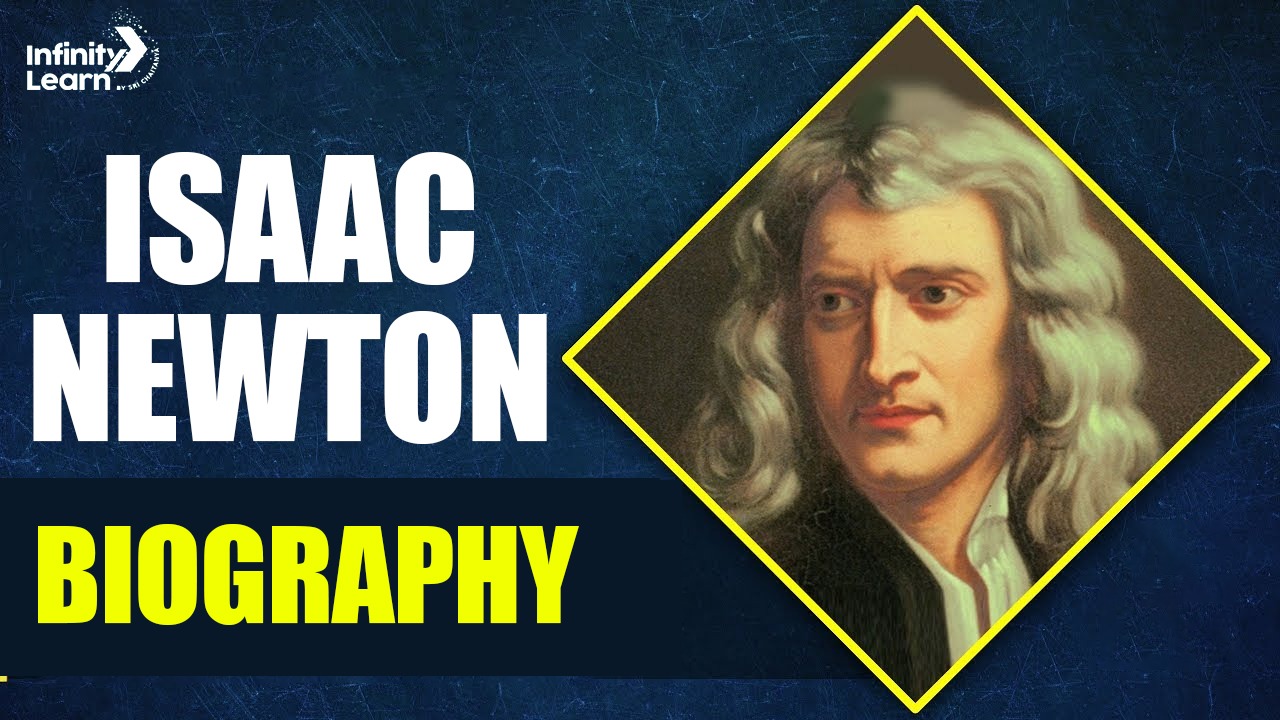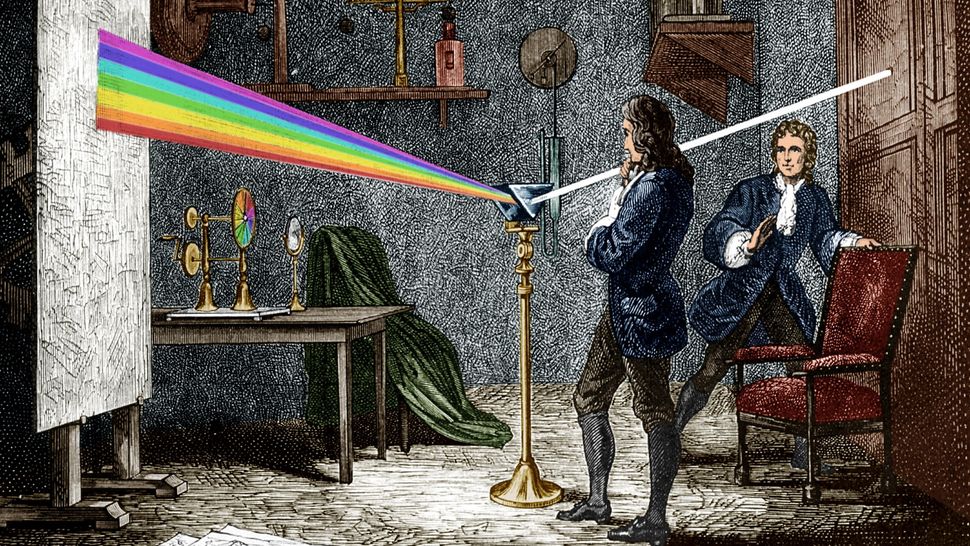Table of Contents
Sir Isaac Newton, often hailed as one of the greatest physicists of all time, transformed our understanding of the universe. Famous for his discovery of the laws of gravity, he made groundbreaking contributions to physics that changed how we perceive the world. Born on January 4, 1643, in Woolsthorpe-by-Colsterworth, England, Isaac Newton was a key figure in the Scientific Revolution, leaving a legacy that continues to influence modern science.
Read Latest Biography – Neeraj Chopra Biography | Swapnil Kusale Biography | Manu Bhaker Biography | Manika Batra Biography | Indresh Kumar RSS Biography

Isaac Newton Biography Overview
| Aspect | Details |
|---|---|
| Full Name | Sir Isaac Newton |
| Born | January 4, 1643, Woolsthorpe-by-Colsterworth, England |
| Died | March 31, 1727 |
| Education | Trinity College, Cambridge |
| Fields of Contribution | Physics, Mathematics, Astronomy, Optics |
| Key Inventions | Reflecting Telescope, Calculus |
| Major Theories | Laws of Motion, Universal Law of Gravitation |
| Significant Works | Philosophiæ Naturalis Principia Mathematica (Principia) |
| Notable Positions | President of the Royal Society, Master of the Mint, MP |
| Achievements | Developed Calculus, Formulated Laws of Motion and Gravitation |
| Honors | Knighted in 1705 (Sir Isaac Newton) |
Isaac Newton Biography Early Life and Education
Isaac Newton’s journey began in a small village in England. His early fascination with the world around him led him to Trinity College, Cambridge, where he pursued his education. It was here that Isaac Newton’s brilliant mind began to shine. At just 22 years old, he made his first significant mathematical discovery—the generalized binomial theorem. In 1665, he earned his B.A. degree, marking the start of his illustrious career.
Isaac Newton Key Contributions
Newton’s intellectual prowess led to remarkable advancements in several fields:
- Calculus: Newton was a pioneer in developing calculus, a crucial mathematical tool for understanding change. His work in this area is foundational to modern physics and physical chemistry.
- Law of Universal Gravitation: The famous anecdote of the apple inspired Newton to formulate the universal law of gravitation, explaining the forces that govern the motion of celestial bodies.
- Laws of Motion: Newton’s three laws of motion laid the groundwork for classical mechanics, describing the relationship between the motion of an object and the forces acting upon it.
- Optics: He built the first practical reflecting telescope and demonstrated that white light is composed of multiple colors, which can be separated using a prism.
Isaac Newton Biography Contributions and Inventions
Isaac Newton’s contributions to science are vast and varied. He is credited with developing calculus, a branch of mathematics essential for understanding change and motion in the physical world. His work in optics, particularly the study of light, laid the foundation for modern physical optics. Newton’s laws of motion and the universal law of gravitation are among his most famous Inventions, forever changing the field of physics.

Isaac Newton Biography – Key Inventions and Discoveries
| Area | Contribution |
|---|---|
| Calculus | Developed the mathematics of change, vital for modern science |
| Law of Gravitation | Discovered the universal force that governs planetary motion |
| Laws of Motion | Formulated the three fundamental laws governing physical motion |
| Optics and Light | Built the first reflecting telescope; studied the nature of light |
| Inventions | Reflecting telescope, prism experiments with white light |
Isaac Newton’s Role in Optics
One of Isaac Newton’s significant contributions to science was his work in optics. He built the first reflecting telescope, which used a curved mirror to focus light, offering several advantages over traditional telescopes. Newton also demonstrated that white light is made up of all the colors of the rainbow, a discovery he made using a glass prism. This finding laid the groundwork for modern optics.
Newton’s Laws of Motion and Universal Gravitation
Sir Isaac Newton’s laws of motion are fundamental principles in physics. They describe how objects move and interact with forces, forming the basis for much of classical mechanics. His discovery of the law of universal gravitation was inspired by the famous incident of an apple falling from a tree. Newton realized that the same force causing the apple to fall also governs the motion of the moon and planets, leading him to formulate the universal law of gravitation.
Also Read – Narendra Modi Biography | N chandrababu Naidu Biography | Parkash Singh Badal Biography
Isaac Newton Biography – Later Life and Legacy
Isaac Newton’s impact extended beyond science. In 1671, he joined the Royal Society of London after developing an improved version of the reflecting telescope. He later became the President of the Royal Society in 1703. Newton also served as a Member of Parliament for Cambridge University and was appointed Master of the Mint in 1700. He was knighted in 1705, earning the title “Sir Isaac Newton.”
Isaac Newton quotes
“Amicus Plato, amicus Aristoteles, magis amica veritas.”
(Plato is my friend, Aristotle is my friend, but my greatest friend is truth.)
— Written in the margin of a notebook while studying at Cambridge. In Richard S. Westfall, Never at Rest (1980), p. 89.”Genius is patience.”
— The Homiletic Review, Vol. 83-84 (1922), Vol. 84, p. 290.”If I have seen further, it is by standing on the shoulders of giants.”
— Letter to Robert Hooke (February 5, 1675-1676). In H. W. Turnbull (ed.), The Correspondence of Isaac Newton, Vol. 1, 1661-1675 (1959), p. 416.”I see I have made myself a slave to Philosophy.”
— Letter to Henry Oldenburg (November 18, 1676). In H. W. Turnbull (ed.), The Correspondence of Isaac Newton, 1676-1687 (1960), p. 182.”I do not know what I may appear to the world, but to myself, I seem to have been like a boy playing on the seashore, finding smoother pebbles or prettier shells while the great ocean of truth lay undiscovered before me.”
— First reported in Joseph Spence, Anecdotes, Observations and Characters, of Books and Men (1820), Vol. 1, 1966 edn, sect. 1259, p. 462.”To every action, there is always an equal and opposite reaction; in other words, the actions of two bodies upon each other are always equal and opposite in direction.”
— The Principia: Mathematical Principles of Natural Philosophy (1687).”Truth is always found in simplicity, not in the confusion of many things.”
— ‘Fragments from a Treatise on Revelation’. In Frank E. Manuel, The Religion of Isaac Newton (1974), p. 120.This version maintains the essence of the original quotes while using simpler language for easier reading.
Conclusion
Sir Isaac Newton’s genius left an indelible mark on the world of science. His discoveries, from the laws of motion to the study of light, continue to shape our understanding of the universe. The legacy of isaac newton inventions and theories remains a cornerstone of modern science, inspiring generations of scientists. Sir Isaac Newton’s life and work, as detailed in any isaac newton biography, reflect the profound impact of his contributions, ensuring his place as one of history’s greatest thinkers.
Isaac Newton Biography FAQs
Who was Sir Isaac Newton?
Sir Isaac Newton was a renowned English physicist, mathematician, and astronomer who made groundbreaking contributions to science, including the laws of motion, the law of universal gravitation, and the development of calculus.
What are Isaac Newton's most famous inventions and discoveries?
Isaac Newton is best known for his laws of motion, the law of universal gravitation, the development of calculus, and his work in optics, including the invention of the reflecting telescope.
When and where was Isaac Newton born?
Isaac Newton was born on January 4, 1643, in Woolsthorpe-by-Colsterworth, a small village in England.
What significant positions did Isaac Newton hold during his lifetime?
Isaac Newton held several important positions, including President of the Royal Society, Master of the Mint, and Member of Parliament for Cambridge University.
When did Isaac Newton die, and what is his legacy?
Isaac Newton died on March 31, 1727. His legacy includes his revolutionary contributions to physics and mathematics, which continue to influence modern science.









